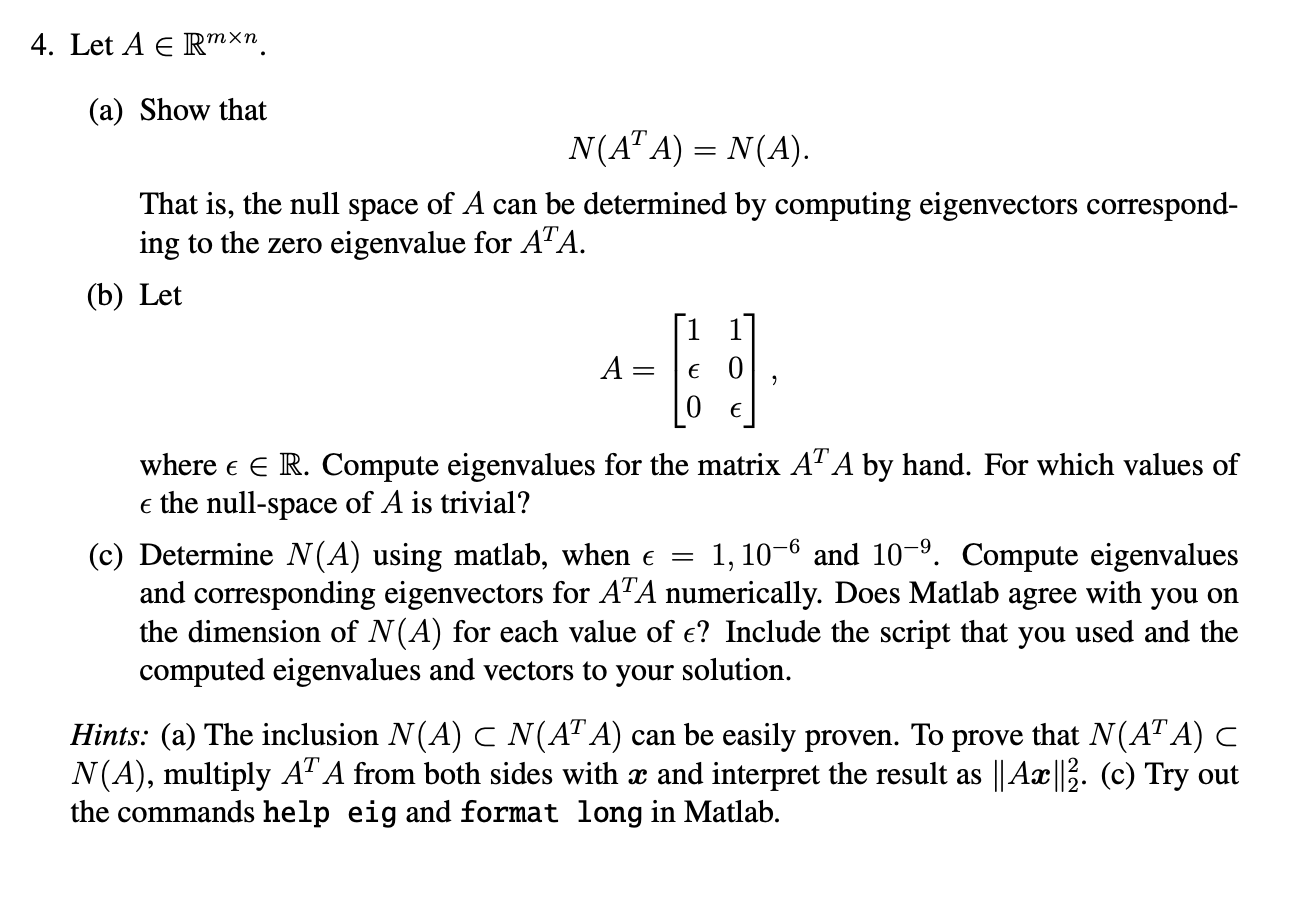Question

Asked By MysticVoyager58 at
Answered By Expert
Blake
Expert · 5.4k answers · 5k people helped
Step 1/1
(a) `A_(m*n` Matrix `rArrA^TA=B_(n*n)` matrix We know `P(A)=P(A^TA)`By rank nulity theorem
`P(A)+ n (A)=n....(a)` `(A^TA)+n(A^TA)n=n...(b)`From a and b
`rArrn(A)=n(A^TA)`Because
`P(A^TA),<P(A).....(1)``P(A),<P(A)....(2)`From (1) and (2)
`P(A)=P(A^TA)`(b) `A=[[1,1],[in,0],[0,in]]``rArrA^TA=[[1,in,0],[1,0,in]][[1,1],[in,0],[0,in]]``A^TA=[[1+in^2,0],[0,1+in^2]].``rArrA^TA ` is a scaalor matrix.`=>` Eigen value of `A^TA ` are `1+in^2,1+in^2.``rArr` And eigen vector for scalor matrix is `([1],[0])` and `([1],[0])` and `n(A^TA)` is always trival for every value of `in. ``=> And` Scalor matrix is always diagonalizable.`=>n(A^TA)` is always trivial for any `in.`=
Final Answer
I hope you like my work. please give a thumbs up.
Thank you.
🧑🏫 More Questions
👉 Interested in exploring further?
Chrome Extension
1. Search answers from our 90+ million questions database.
2. Get instantly AI Solutions powered by most advanced models like GPT-4, Bard, Math GPT, etc.
3. Enjoy one-stop access to millions of textbook solutions.
4. Chat with 50+ AI study mates to get personalized course studies.
5. Ask your questions simply with texts or screenshots everywhere.